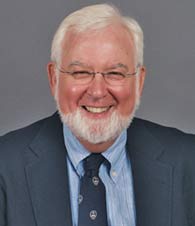|
Executive Interviews: Interview with Allan R Cohen on Staying on Top, Always
October 2009
-
By Dr. Nagendra V Chowdary
 Allan R Cohen
Allan R Cohen Edward A Madden Distinguished Professor of Global Leadership at Babson College. 
-
Similarly, what according to you
are the top-10 companies in the world
during the last 4-5 decades? What are
the unique characteristics of these
top-10 companies?
The recent demise of the American
auto companies, and numerous other
big and powerful companies, makes
naming the top 10 a particularly
hazardous game to play. In my view,
the main characteristics of the best
companies are that they create many
mechanisms for self renewal, so that
they can keep on learning and
changing as conditions change. And
of course they have to be reasonably
profitable along the way or they won’t
get a chance to continue.
-
Quite often, the terms, great
companies, visionary companies,
world-class companies, persistently
successful companies, etc., are used
synonymously. Rather, there’s some
confusion amongst these
nomenclature. Are they really same or
does each of them have a different
connotation?
Most of these terms are trying to get at
the same thing. Since different
people with their own aspirations for
recognition develop them, they try to
add their own twists. But all the
terms are trying to get at long-term
success.
-
For creating great companies what
do you require the most – visionary
leaders or visionary managers or a
just combination of both of them?
Visionary leaders without the ability
to oversee and ensure
implementation are just dreamers,
while those who just execute without
vision are like lemmings. A
combination will always be
necessary.
-
Calling them two widely held and
deeply cherished myths, James C
Collins and Jerry IPorras (in ‘Built To
Last’), conclude that “we found that
creating and building a visionary
company absolutely does not require
either a great idea or a great and
charismatic leader.” In fact, they
present the evidence that great ideas
brought forth by charismatic leaders
might be negatively correlated with
building a visionary company. What
do visionary companies have in
common and do they exhibit shared
leadership?
Collins and Porras argue that
visionary companies have a vision
about the kind of company they want
to be, not necessarily about their
products. That’s partly correct, but a
company can be a wonderful place
for employees and completely fail if it
has the wrong products for market
conditions. Further, great ideas may not be
necessary at the start of the company,
but somewhere along the line there
has to be a number of great ideas,with
appropriate evolution, for the
company to continue to succeed. There are certainly many people who
think that leadership starts with
charisma. But I agree with Collins
and Porras that charisma is certainly
not necessary for effective leadership.
In his next book, Good to Great,
Collins makes the case that humility
and persistence aremore important. I
believe that it is necessary for effective
leaders to have the functional
equivalent of charisma, however.
They have to believe in and convey
some future state which appeals to
followers and inspires them to give
thier full effort. But the inspiration
comes primarily from the appeal of
the articulated future state to that
group of followers, not necessarily
from the personal charisma of the
leader. Finally, shared leadership is a
complex idea. Onemeaning is that no
leader does it alone, which is
certainly true in any organization of
any significant size. There is a lot of
mythology about the great visionary
entrepreneurial leader, but many of
the most dramatic ones who try to do
everything themselves end up
hurting their companies once they get
past 50 or 100 employees, or have to
move to several product lines. From
outside however, it may look as if the
leader of a large organization is
making all the decisions, but that’s
because we don’t see all those who
contribute. Another meaning of shared
leadership, which I have written
about in Power up; Transforming
Organizations through Shared
Leadership, is for the top person of
the unit to build a team of direct
reports with whom he or she shares
the toughest decisions. In most top
teams, at best members serve as
advisers to the leader, not really
expected or allowed to share
responsibility for making the largest
and toughest decisions. As
organizations become increasingly
complex, technologies change
rapidly, markets shift, competition
increases, leaders will have to engage
more as partners with their direct
reports and shared leadership will
become a central part ofwhat effective
leaders do.
|
